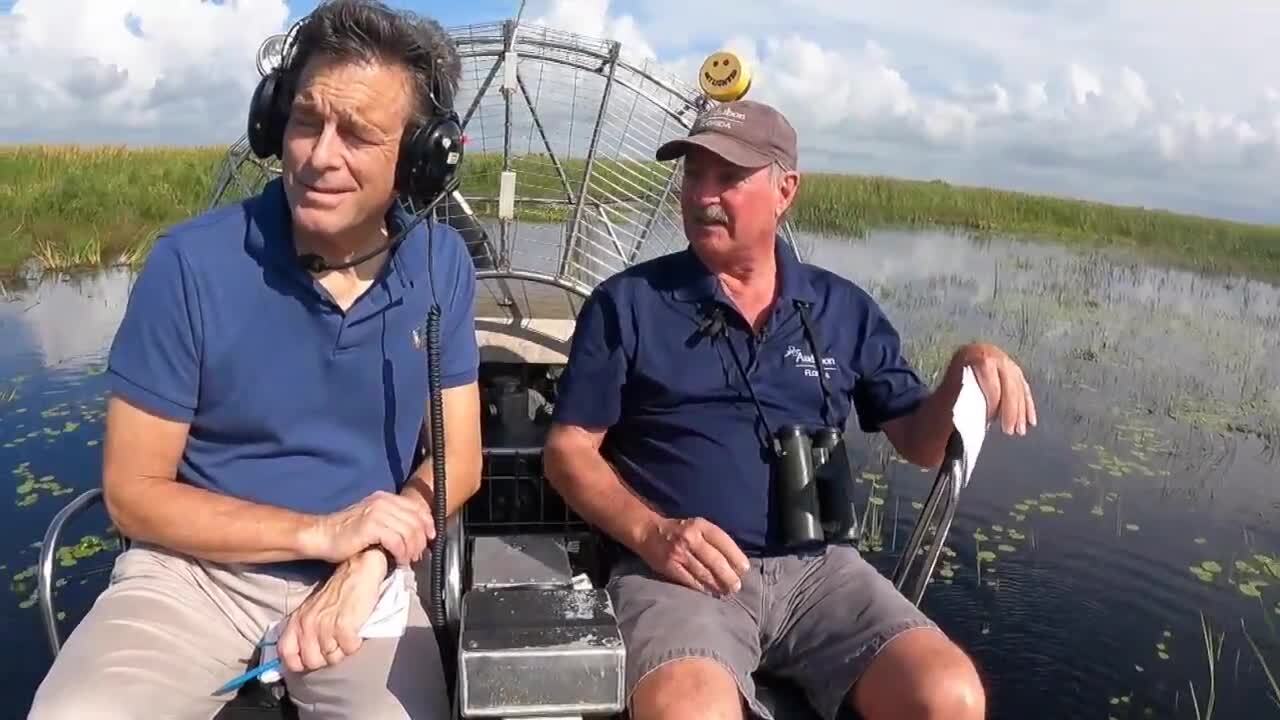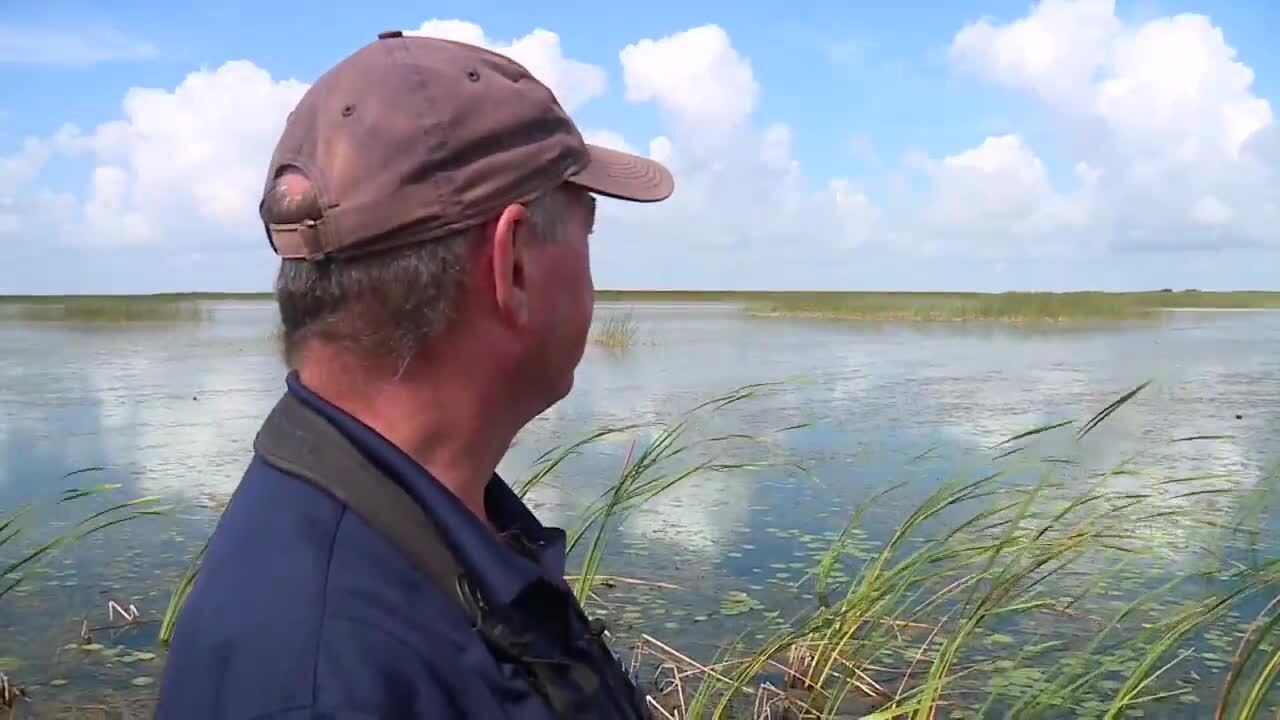PALM BEACH COUNTY, Fla. — A potential toxic algae crisis looms on the horizon this coming summer. Big outbreaks on Lake Okeechobee are already raising alarms.
The upcoming rainy season, combined with hurricane season, could continue to swell the big lake. That could compel the Army Corps of Engineers to discharge water into the St. Lucie Estuary.
It would be a devastating outcome -- environmentally and economically -- but one that Florida has seen before.
The question, as always, is what can be done about it?
Those answers begin in the huge watershed north of the lake. Dairy farms and ranches, among other agricultural interests, dot that landscape. Fertilizer from those operations is carried by water runoff into Lake Okeechobee. The phosphorous content is a nutrient that acts like a superfood for algae blooms. Scientists argue -- and they have done so for years -- that slowing the flow of water and runoff into the lake is vital if water quality is to be improved.
I went out on the lake with Dr. Paul Gray. He's a scientist with Audubon Florida and has studied the lake and watershed ecosystem for more than a quarter century.

"This is our remaining water supply, and it needs to be clean enough to drink," Gray said. "And it can support wildlife and great bass fishery and tourism."
Native Indians called the lake Okeechobee, meaning "big water." The fact is wetlands make up about one-third of the lake. Marshes are teeming with aquatic plant life. They are nurseries for wildlife and sponges for the excess nutrients (fertilizer runoff) that trigger those algae blooms.
But nature needs a helping hand from humans.
"We're going to have to clean up the nutrients north of the lake," Gray said. "We're going to have to catch more water."

Too much water drowns marsh grasses -- those natural defense barriers -- and overwhelms the lake.Scientists believe the lake can absorb and handle up to 100 tons of phosphorous runoff each year.
"Instead of getting 100 tons per year, we're averaging about 500," Gray said. "The year of Hurricane Irma we got 1,000 (tons), and we think that's why the next year we had that super bloom in the lake."
It bears repeating. Environmentalists claim ending such massive blooms begins with limiting fertilizer laden runoff into the north end of the lake from the sprawling watershed that sits atop it.
Managing water releases and building filtration marshes to aid those provided by nature are vital parts of any sustainable restoration effort.
"Right now we're working on reservoirs east, west and south, and when we get done with those, we need to work on more storage (to the) north," Gray said.
Toxic algae blooms are greeted with predictable outcry. Then it subsides, critics note, and the ugly cycle begins again.
The future of water quality for the entire region -- watershed to lake and coastal communities to the heart of the Everglades -- depends on breaking that cycle.

Gray is not giving up.
"I'm from the Midwest," he said. "I'm from Missouri and my family is like, 'You ever coming back here?' And I'm like, 'I don't think so.' Because this is just paradise. It's subtropical, it's got all this cool stuff and, you know, it's worth fighting for."





